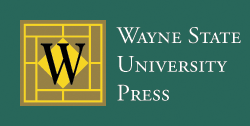Abstract
The movement of printers and their technologies and practices between Bass Strait and the Australian mainland was in clear evidence from the 1820s onward. New South Wales government printer George Howe’s son George Terry began a press in northern Tasmania in early January 1825 to print The Tasmanian and The Port Dalrymple Advertiser. After twenty issues of The Tasmanian, George Terry relocated in late May to Hobart to contentiously start a joint venture as Tasmanian government printer with James Ross: The Hobart Town Gazette, allegedly pirated from Andrew Bent’s newly unlicensed newspaper. Bent commenced his professional life in 1812 as assistant to George Clark, Tasmania’s government printer; Bent succeeded Clarke in 1815 until 1825, after which he left Tasmania in 1839 to pursue new opportunities in Sydney. Within two months, Bent founded the newspaper Bent’s News and New South Wales Advertiser. John Pascoe Fawkner, Victoria’s first printer, commenced his printing career in 1828 in Launceston when he launched the Launceston Advertiser. He moved to Melbourne in 1835 and established the colony’s first newspaper, the Melbourne Advertiser, on 1 January 1838. Fawkner maintained a significant voice in the colony after his departure from the industry in the 1840s, such as being elected a member of local council in 1845, participating in the separation of the Port Philip district from New South Wales, and publishing letters expressing his views on colonial life. This article therefore provides a twenty-first-century appraisal of the intra- and intercolonial connectedness of these peripatetic printers.
Recommended Citation
Hargrave, Jocelyn
(2021)
"Peripatetic Printers of Early Nineteenth-Century Australia: The Interconnected Stories of Howe, Bent, and Fawkner,"
Antipodes: Vol. 35:
Iss.
1, Article 16.
Available at:
https://digitalcommons.wayne.edu/antipodes/vol35/iss1/16
